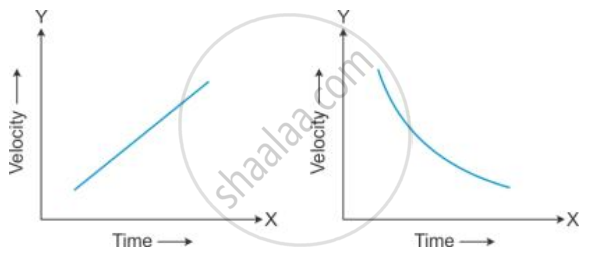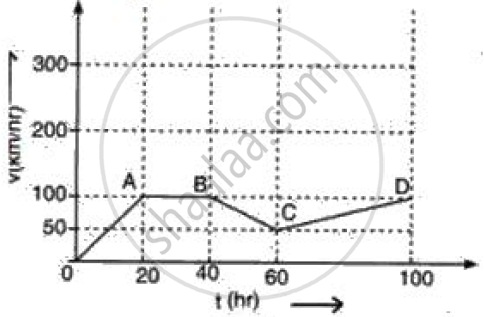Advertisements
Advertisements
प्रश्न
What do you mean by constant acceleration?
उत्तर
A body is said to have constant acceleration, if it travels is a straight line and its velocity increases or decreases by equal magnitude in equal intervals of time.
Ex: the motion of a freely falling body.
APPEARS IN
संबंधित प्रश्न
An object of mass 16 kg is moving with an acceleration of 3 m/s2. Calculate the applied force. If the same force is applied to an object of mass 24 kg, how much will be the acceleration?
A toy car initially moving with uniform velocity of 18 km h-1 comes to a stop in 2 s. Find the retardation of the car in S.I. units.
State the type of motion represented by the following sketches in Figures.

Give an example of each type of motion.
A space craft flying in a straight course with velocity of 75 km s-1 fires its rocket motors for 6.0 s. At the end of this time its speed is 120 km s-1 in the same direction.
Find
(i) The space craft's average acceleration while the motors were firing
(ii) The distance travelled by the space craft in the first 10 s after the rocket motors were started, the motors being in action for only 6 s.
If a body is moving with a constant velocity its acceleration is ______.
State its value in C.G.S. as well as in S.I. system.
From the diagram given below, calculate acceleration.

A racing car, initially at rest, picks up a velocity of 180 kmh−1 in 4.5 s. Calculate
- acceleration
- distance covered by the car.
A body falls towards the earth. Does it have positive or negative acceleration?
Can you use the relation [B1]?
The initial velocity of a car is 10 ms-1. It moves with an acceleration of 2 ms-2. What will be its speed after 10 seconds?
State if the following situation is possible:
A body moving horizontally with an acceleration in vertical direction.
Is it possible for an accelerating body to have constant speed?
Convert the following acceleration:
7200 km/h2 into m/s2
Figure represents graphically the velocity of a car moving along a straight road over a period of 100 hours.
Calculate the acceleration along AB and the retardation along BC.
Assertion: The accelerated motion of an object may be due to change in magnitude of velocity or direction or both of them.
Reason: Acceleration can be produced only by change in magnitude of the velocity. It does not depend the direction.
The speed of a particle is constant. Will it have acceleration? Justify with an example.
A bus accelerating with 4ms-2 changes its speed from 60ms_1 to a certain value in 5s. The final speed is ______.
It is possible to have objects moving with uniform speed but variable acceleration.
What is the difference between uniform acceleration and non–uniform acceleration?
